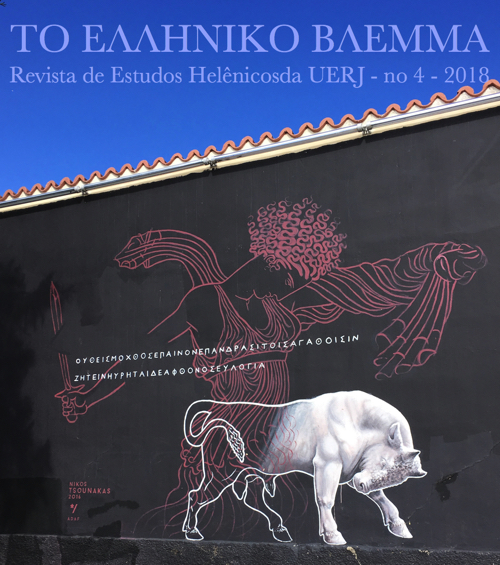Η χρήση του «υπερβατού» από έναν εξελληνισμένο Σύρο των βυζαντινών χρόνων. Η περίπτωση του Ιωάννη του Δαμασκηνού
DOI:
https://doi.org/10.12957/ellinikovlemma.2018.39191Resumo
John Damascene (679/680-749/750) was the most famous writer of the 8th century, a theologian, hymnographer, ecclesiastical orator and teacher of the Church. His writing work has been enjoying universal acceptance and lasting recognition. This study presents an aspect of his multifaceted activity. His deep knowledge of the rules of rhetorical art, as formed in previous periods, assimilated by the ecclesiastical Fathers and orators (Basil the Great, Gregory of Nazianzus and John Chrysostom) during the early Christian centuries and incorporated into ecclesiastical rhetoric.
The current study presents the use of the hypervaton by John Damascene in his praising speech to the great martyr Barbara. The Encomium by John Damascene is full of figures of speech and expressive means that prove his outstanding abilities as an orator. A dominant position among the other figures of speech is occupied by the hypervaton, one of the three figures of speech that, along with the chiaston and the anastrofe, forms the group of figurae per transmutationem. There are three categories of hypervaton presented, with the individual sub-cases. The first hypervaton movement and rearrangement (hypervaton I) involves syntactical terms (YI). The second (hypervaton II) involves specific words that are not syntactic terms on their own (YII), while both the syntactic terms and individual words are involved in the third category (prolonged hypervaton, YIII).

